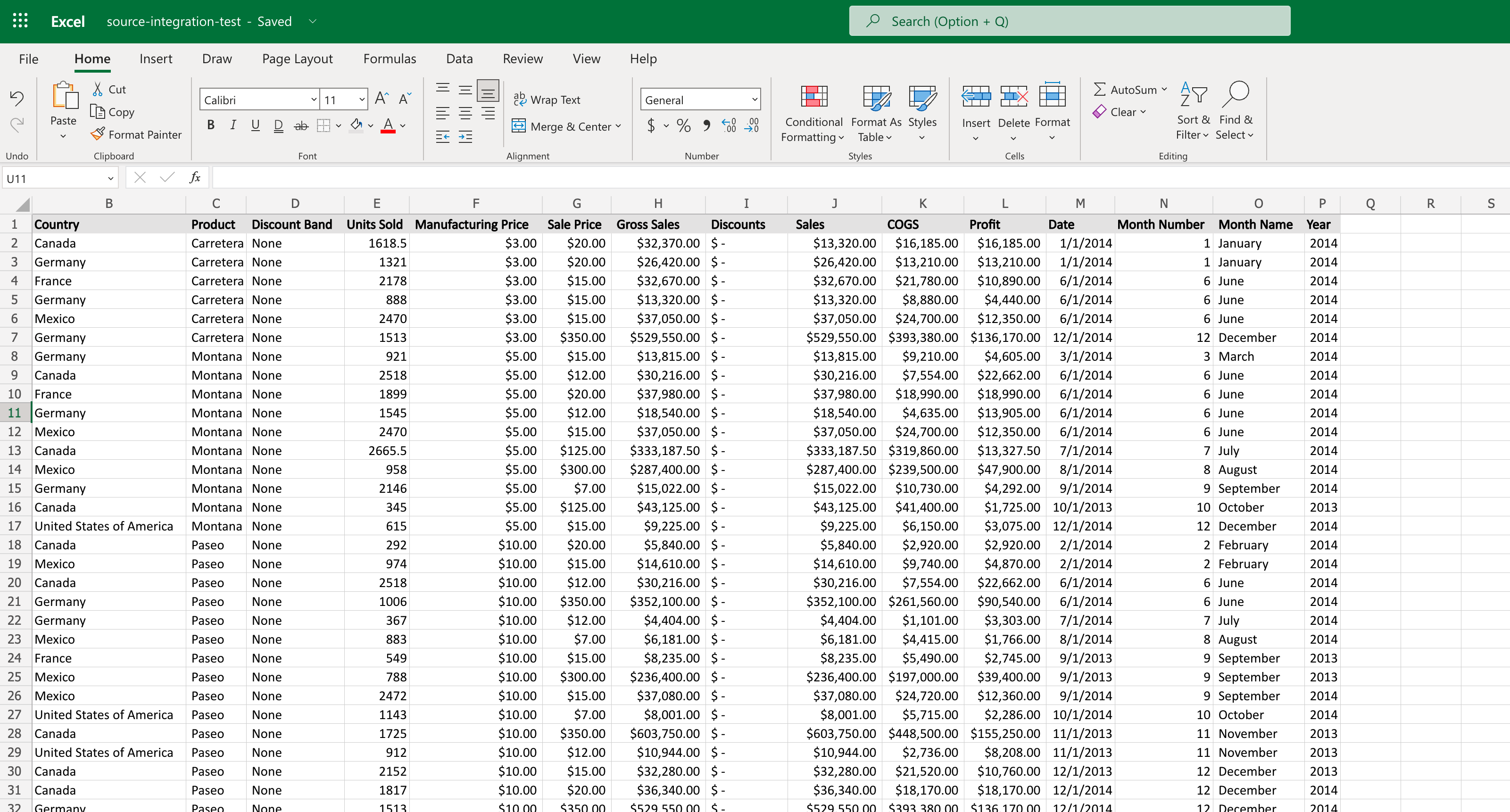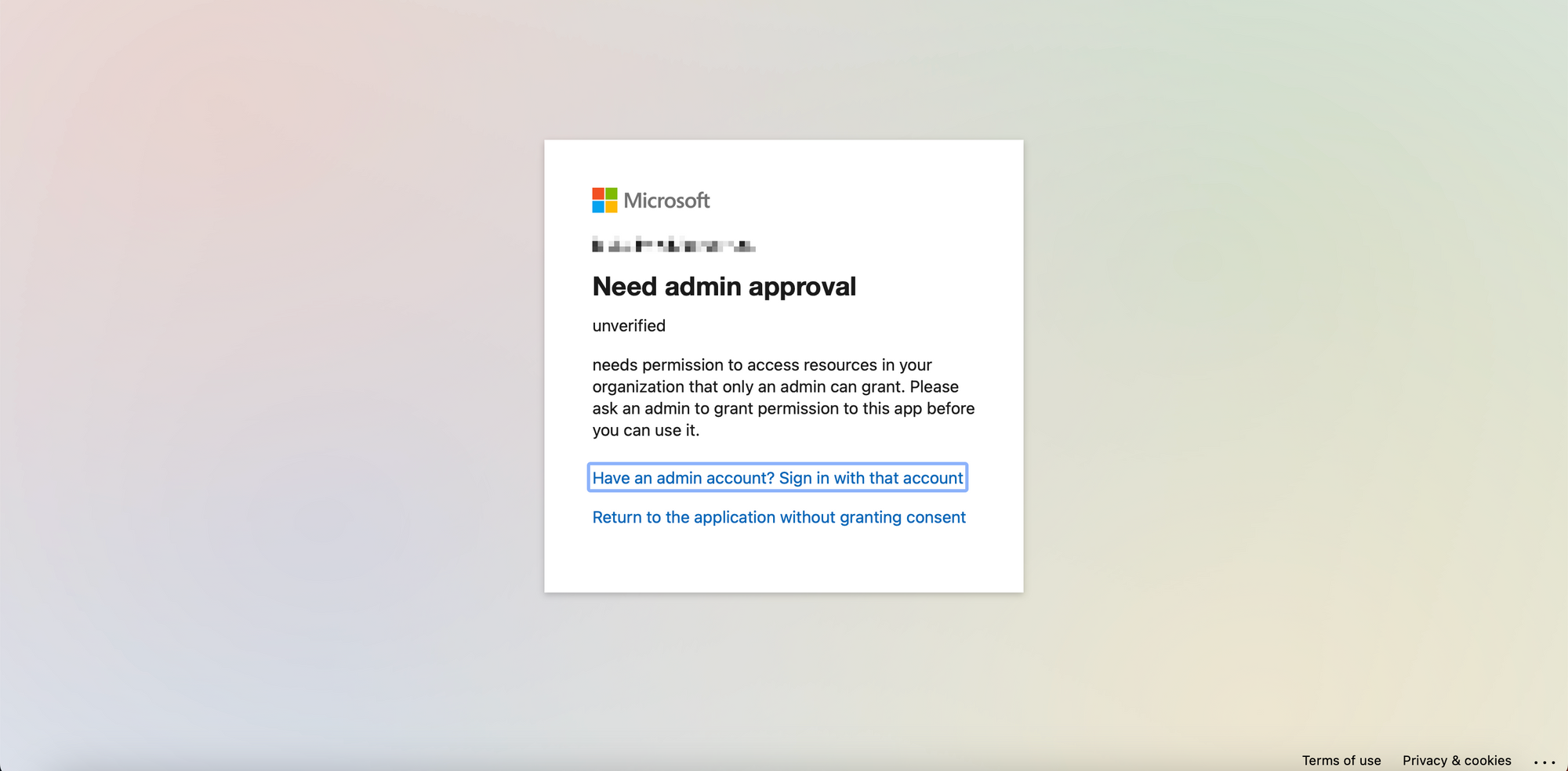Microsoft Excel is the industry leading spreadsheet software program, a powerful data visualization and analysis tool.
Overview
Hightouch lets you pull data stored in Microsoft Excel and push it to downstream destinations. Before connecting your Microsoft Excel source, it's best to make sure they meet the formatting requirements.
Microsoft Excel formatting requirements
- Your Microsoft Excel workbook must be a
.xlsxfile. Other extension workbooks, for example,.xlsor.csvaren't supported. Convert your file if necessary. - Your Excel worksheet must have column names in the first row. In the following image, you can see that the column names are
Country,Product,Discount Band,Units Sold, andManufacturing Priceetc. - To ensure accurate processing, all valid data must be present in the top-left portion of the sheet. If a column name is left empty, the preceding column will be treated as the last column in the file. Similarly, if a row is left empty, the preceding row will be considered the last row in the file, and any subsequent rows will not be processed.

Connection configuration
To get started, go to the Sources overview page and click the Add source button. Select Microsoft Excel and follow the steps below.
Authorize connection
- Click Log in to Microsoft Excel and select the desired Microsoft Account.
- After reading what authorization you're giving to Hightouch, click Accept.
- Select the Drive containg the data you wish to sync from the dropdown.
- Click Continue.
Test your connection
When setting up Microsoft Excel as a source for the first time, Hightouch checks that you have the correct permissions. Once the test passes, click Continue to finish setup.
Next steps
Once your source configuration has passed the necessary validation, your source setup is complete. Next, you can set up models to define which data you want to pull from Microsoft Excel.
Model setup
- In Hightouch, go to the Models overview page.
- Click Add model.
- Select the Microsoft Excel source you previously created.
- Select the Workbook which has the data you want to sync.
- Next, select a Sheet to read from. Hightouch treats each sheet as a separate table. If you want to sync data from multiple sheets, you need to set up a separate model for each one.
- Preview your model's query results.
- Click Continue.
- Name your model and select its primary key. Hightouch uses the primary key to determine which rows have been added, changed, or removed since the last sync.
Tips and troubleshooting
If you encounter an error or question not listed below and need assistance, don't hesitate to . We're here to help.
Need admin approval
If you see a Need admin approval page appear when accessing Microsoft's OAuth login flow, your Azure Active Directory user account might not have the necessary permissions to connect applications to your organization.

Ask one of your Azure organization's admins to edit your user account permissions.
You can read more about Azure user permissions and configuring user settings in Azure's documentation.
Files not appearing in model dropdown
Only .xlsx files are supported.
Other files won't appear in the dropdown.
Convert your file type to .xlsx to make it available to Hightouch.
